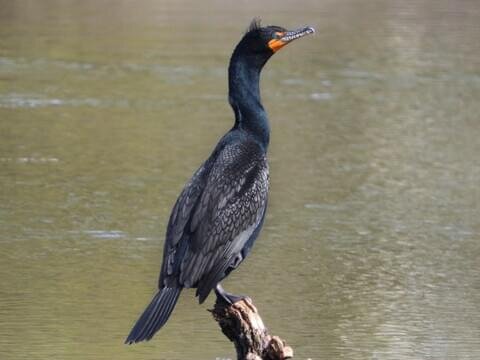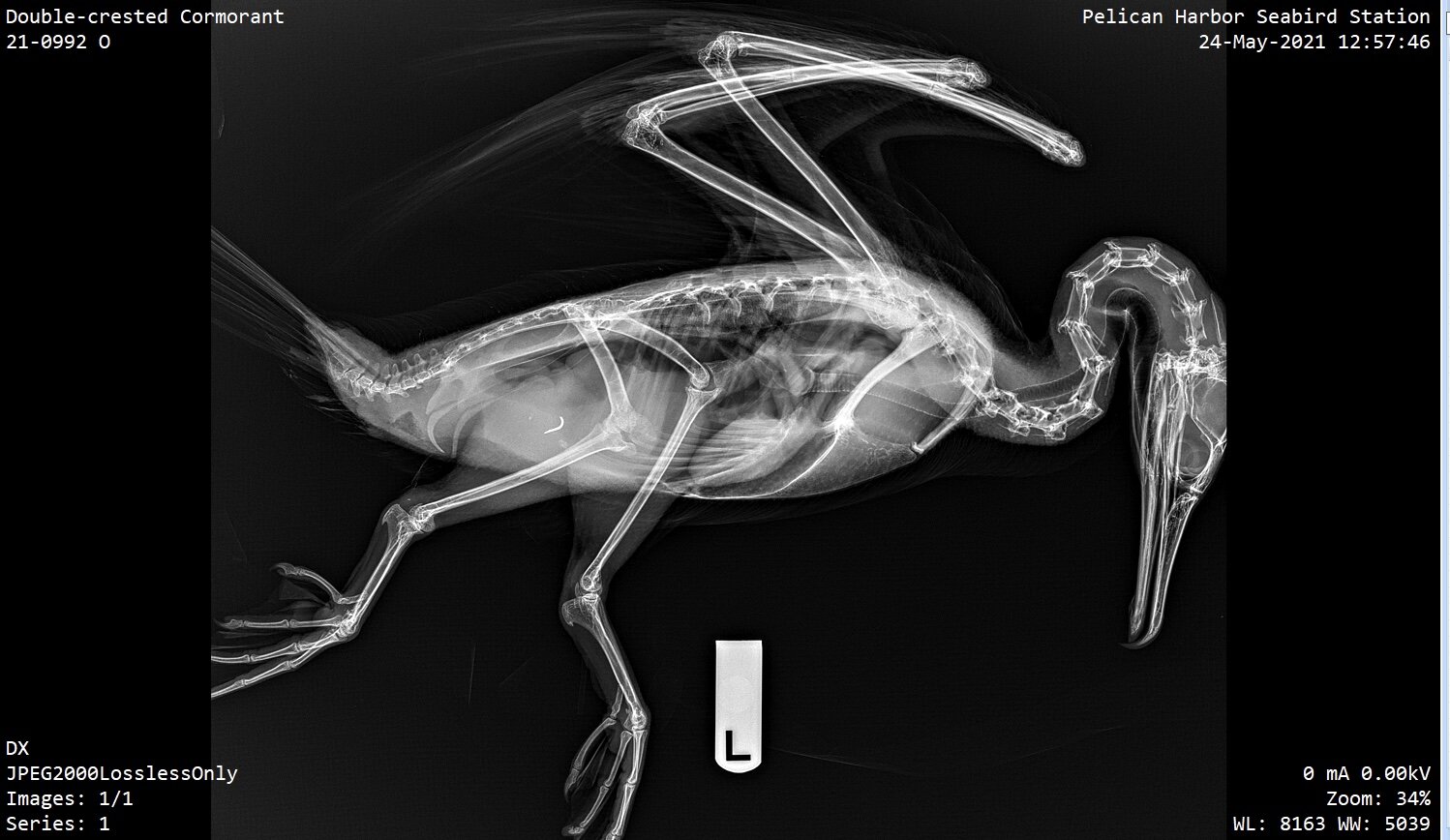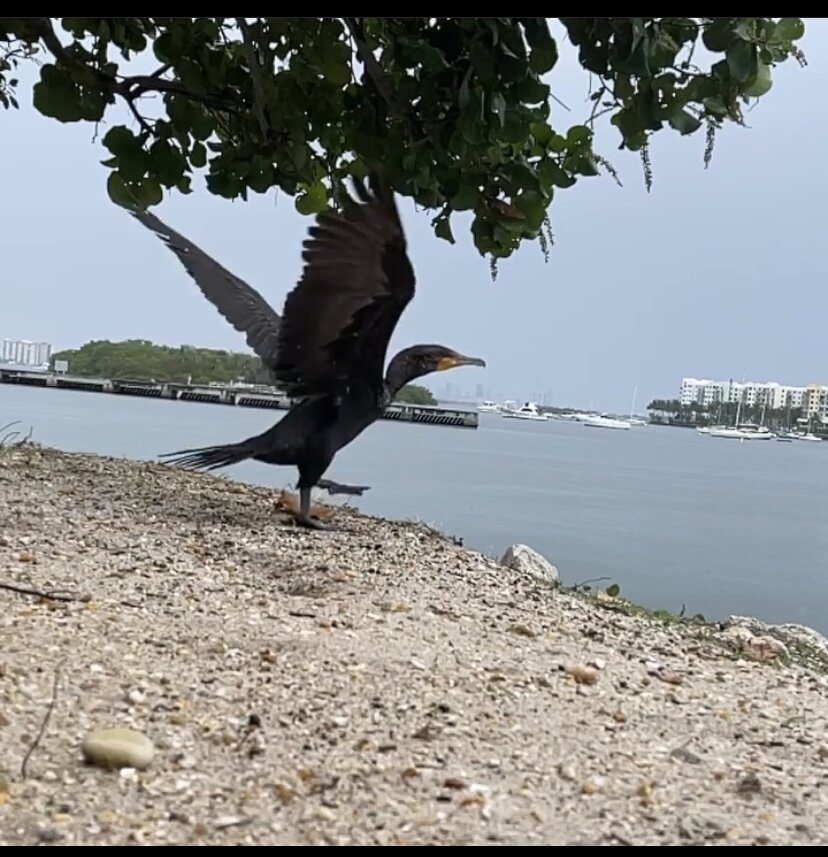Written by: Stephanie Gomez, PHSS Intern
Today I will be talking about patient 21-0992, an adult Double-crested Cormorant. It came in on May 23rd after people found him weak and quiet yet alert. During the intake exam, staff came across several findings. The patient seemed to be moderately dehydrated due to the mucous membrane observed as pale-colored and dry. A mouth swab was performed to check for any parasites it may have, and it came back negative. The patient was ultimately diagnosed with astasis, commonly found in birds, which is a lack in motor coordination with the inability to stand, walk, or even sit properly.
After the intake exam, this patient was given subcutaneous fluids for dehydration, Vitamin B Complex for protein growth, Vitamin E for helping maintain metabolic processes, Panacur, and Ivermectin for any parasites the patient might have. This patient was introduced to a liquid diet called Piscivores care, a special liquid diet for Piscivores (fish eaters). This is used to lighten the load on the stomach and is high in nutrients to get this bird back into shape. The clinic staff then proceeded to do an x-ray of this patient to check for any unusual findings inside not seen by the eye. They found that there was a hook fragment found in the GI tract. It was soon given the medication called Meloxicam which is used as an anti-inflammatory.
As part of the patient’s continued care, it was kept in a cage inside the ICU with plenty of comfort and enrichment. The method called the “cotton fish method” was done which is a process in which cotton is put inside a fish, the fish is given to the patient, in hopes that the hook fragment piece will attach to the cotton and the bird will regurgitate it out. This method is the first to be used because it is noninvasive. Hydrotherapy was also done once in a while to help relieve some stress off the patient and help with the condition of astasis. Hydrotherapy is performed by placing the bird into a big bucket of water to allow it to kick its feet. This also helps to enable the muscles to move in a lighter way inside the water. The veterinarian proceeded with a check-up on the hook fragment found and cleared the cormorant of the hook.
Finally, after seeing some progress inside and the patient was getting stronger, it was moved into an outside enclosure. Here the patient has the space to regain flight muscles, swim in the big pool, and continue healing. It began flying, standing much better, swimming, and was seen catching its own fish in the big pool inside the pen. After 24 days in care, it was cleared to be released! On June 17th, this Double-crested cormorant was released on the PHSS premises. It flew out of the cage and took a nice little bath once it reached the water.
During this process, I learned the importance of deworming a patient. Many parasites can enter the body of a bird, so taking precautions and treating them as soon as possible help prevent them from infesting a patient. Once these worms reach the gut, they can multiply. The main problem with worms is that they can suck up nutrients the bird needs, and as more accumulate, the bird becomes weak, lethargic, develops poor feather condition, and even reduces egg production.



Sources:
https://vetafarm.com/worms-in-birds/




